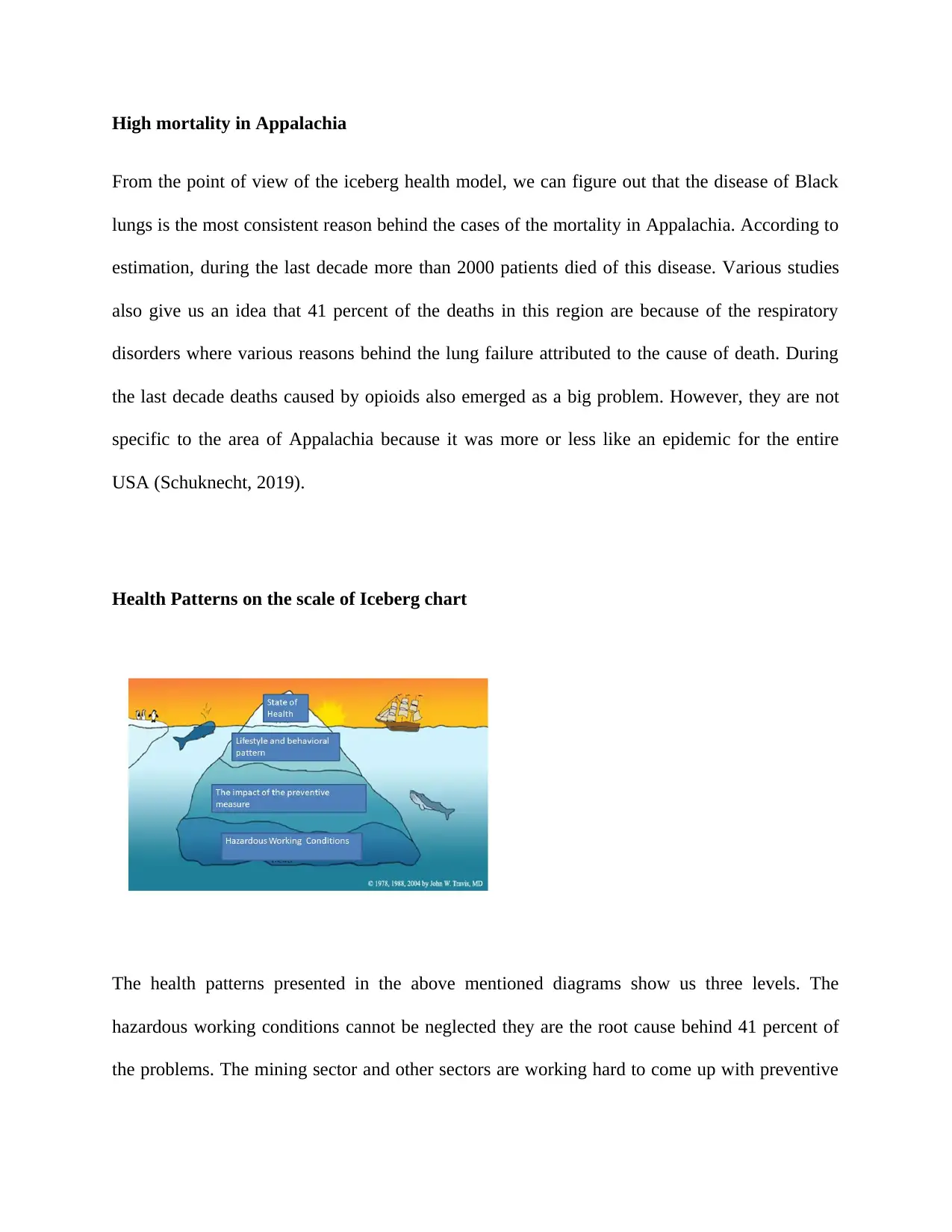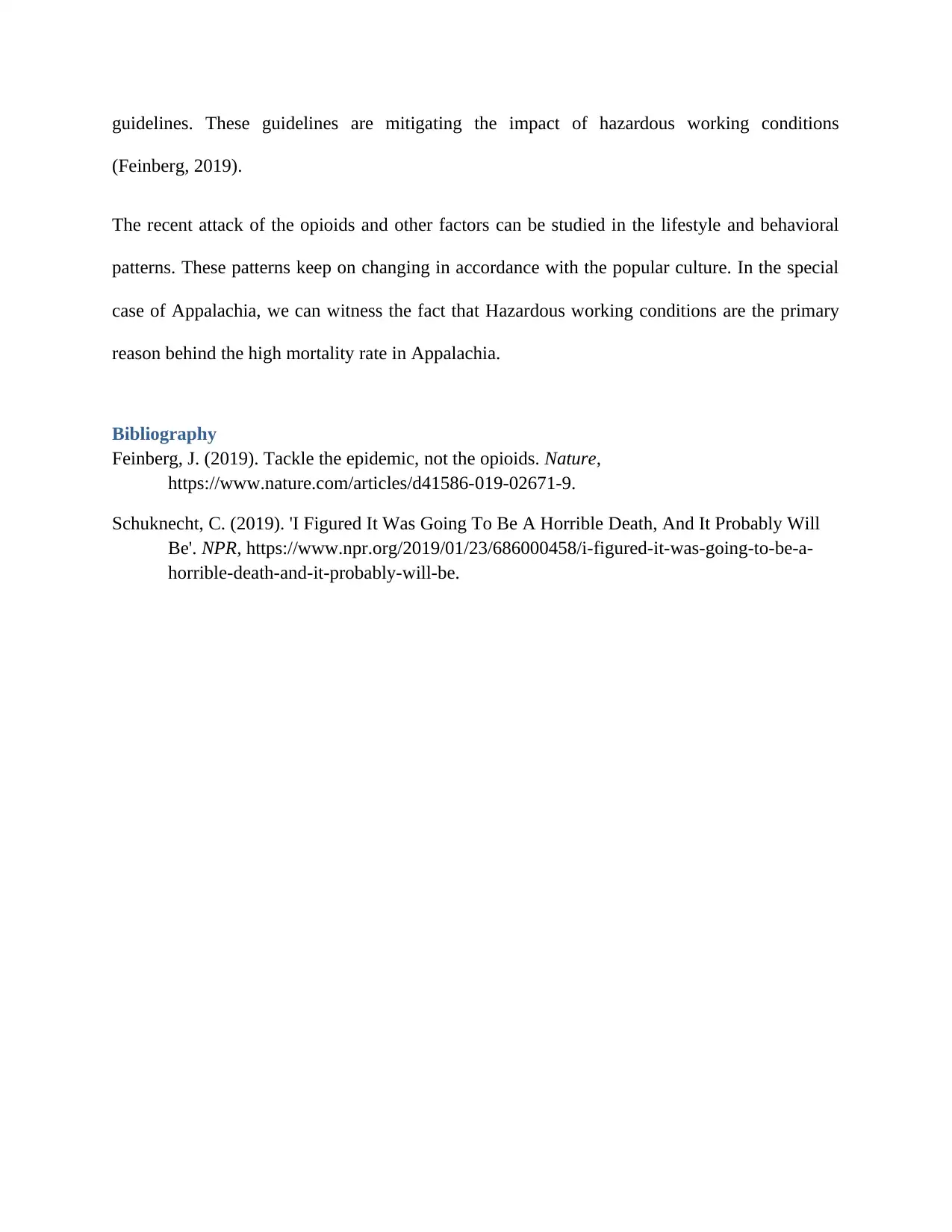Appalachia Mortality: Understanding Health Patterns via Iceberg Model
VerifiedAdded on 2022/09/27
|2
|329
|36
Report
AI Summary
This report examines the high mortality rates in Appalachia through the lens of the Iceberg Health Model, identifying black lung disease as a significant factor, with over 2000 deaths attributed to it in the last decade. Respiratory disorders, linked to hazardous working conditions in the mining sector, account for 41 percent of deaths. While opioid-related deaths have also contributed to the problem, they are not exclusive to Appalachia. The report highlights the importance of addressing hazardous working conditions and lifestyle behaviors to mitigate the high mortality rate, emphasizing preventive guidelines and cultural shifts.
1 out of 2





![[object Object]](/_next/static/media/star-bottom.7253800d.svg)